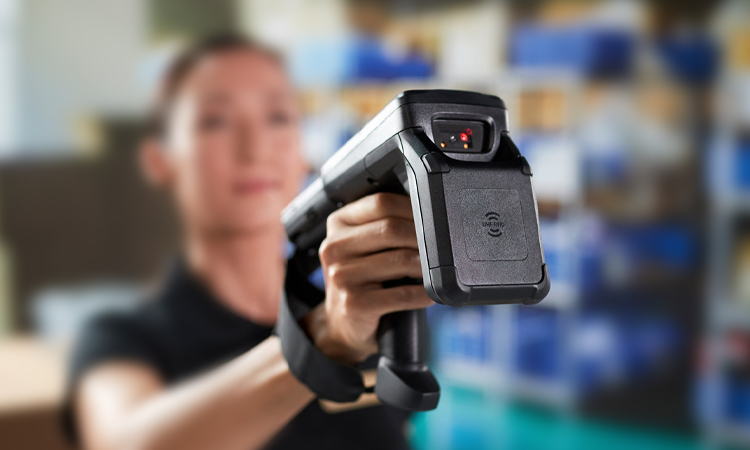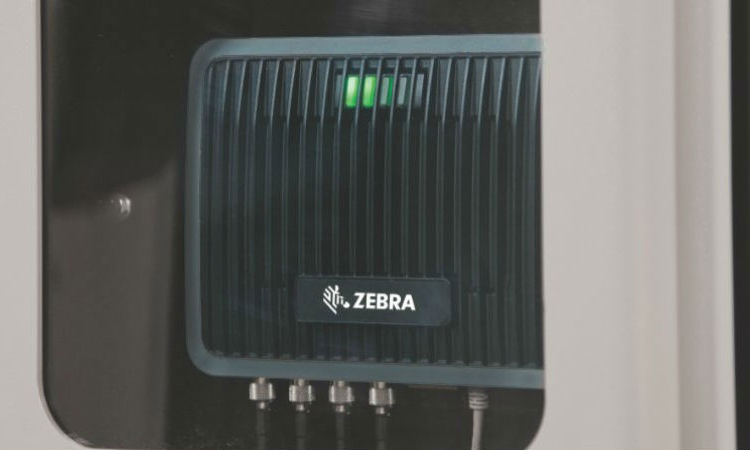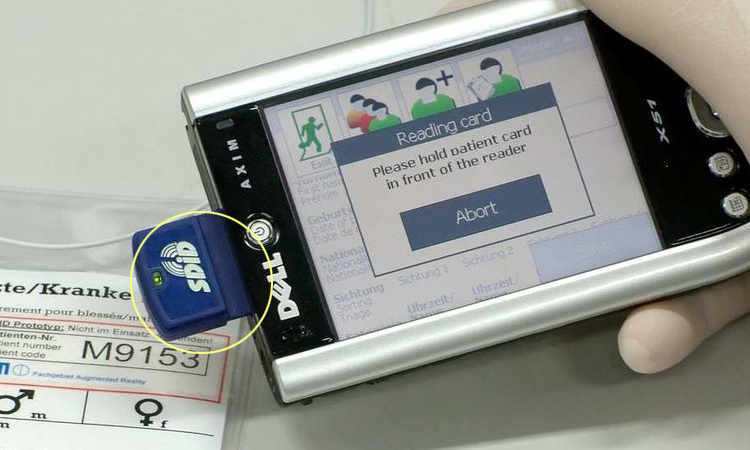RFID Card Readers are electronic devices that read and write data from RFID cards. These devices use radio waves to communicate with RFID cards. They are small devices with unique identifiers that can be attached to objects or carried by people. RFID Tag detectors are commonly used in various applications, including access control, transportation, and inventory management.
What is RFID?
RFID technology uses radio waves to send data between a reader and a tag. The reader sends out a radio frequency signal picked up by the tag. Then, the tag responds by transmitting its unique identification code to the reader. This process allows the reader to identify the tag and retrieve its information.
It has been around for decades but has only recently gained popularity due to its many benefits. Radio frequency identification Card Readers are easy to use, require little maintenance, and are cost-effective compared to other data collection methods. They are also faster and more efficient than traditional card readers. Because they can read many tags simultaneously and do not need a direct line of sight.
Related Reading: What is RFID Labels and What Does It Consist Of?
What is an RFID Card Reader?
RFID card detectors are a type of technology that uses radio waves to read and capture the information in an RFID (radio-frequency identification) card or tag. This technology allows contactless communication between the card reader and the RFID card. They making it a convenient and efficient method for identifying and tracking people, objects, and animals.
An radio frequency identification card reader is a device that can read the data stored within an RFID Card. The reader usually consists of two components. An antenna to send and receive data and an RFID chip embedded within the card contain unique information about the user. The data stored on the card can be used to access the user’s identity or other information associated with them. Such as financial information.
How RFID Card Readers Work
RFID readers use RFID technology to read data stored in an RFID tag or card. These cards and tags are often used to control access to buildings, computers, and other secure areas.
The radio frequency identification card reader is made up of two components:
- The Antenna
- The Card Reader Itself
The antenna emits a low-frequency radio signal detected by a chip, also called a tag, embedded in the card or tag. The tag is programmed with a unique serial number or code that contains information about the cardholder. When the card is brought near the antenna, the reader will detect the signal from the tag and send it through a communication interface to the card reader.
Once the card reader receives the signal from the tag, it decodes the serial number or code embedded in the card. And then sends that information to a computer system for processing. Depending on the kind of data encoded on the card or tag, the reader can grant or deny access to the cardholder.
RFID tag readers are used for many applications. Including access control systems, ticketing, loyalty programs, and employee tracking. They also control entry or exit to parking lots and automated teller machines (ATMs). Since the data stored in the tags are encrypted, the risk of unauthorized use is minimal. RFID readers are cost-effective and convenient, making them popular in many industries.
RFID Card Readers Types
There are several different types of RFID card detectors, each designed for specific applications and environments. Some common types of RFID card readers include:
Handheld RFID Readers
Handheld RFID Readers are small, ergonomic devices that read Radio Frequency Identification (RFID) tags and labels. RFID tags and labels are used to store and send data wirelessly, making them ideal for inventory management, asset tracking, and other automation applications.
You can use Handheld RFID readers to capture the data encoded in an RFID tag. And then interact with a computer or other device to process the data according to the application requirements.

Handheld RFID readers come in several forms, including dedicated handhelds, integrated handhelds, and multi-protocol handhelds. They are lightweight, rugged, and can be operated with just one hand.
The readers can also read many tag types and offer both long and short-range operability. Handheld RFID readers can be programmed with a wide range of capabilities and features and are easy to use, making them suitable for various industries.
Fixed RFID Readers
Fixed RFID Readers are readers designed to be permanently installed in a location. These readers can be installed relatively easily, allowing them to read a wide range of RFID tags and work with different readers.

Fixed RFID Readers are used for a variety of applications. Such as access control, asset tracking, inventory management, and shop floor data collection. They provide fast, accurate, and secure identification of people or items while eliminating manual check-in and check-out processes. Fixed RFID Readers are typically connected to a computer or a network and allow data to be transferred wirelessly to a central database.
Mobile RFID Readers
Mobile RFID Readers are portable, handheld devices that read and write data from and to an RFID tag. These readers allow for capturing and storing data in various applications, ranging from asset tracking and inventory control to access control and retail point-of-sale.

Mobile RFID Readers can be connected to various devices. Including tablets, smartphones, laptops, and even desktop computers, via Bluetooth or USB connection. These devices are lightweight yet powerful and are designed for reliable and accurate data reading and writing, even in harsh environments.
Uses of RFID Card Readers
RFID card readers are used in various applications, including access control, security, inventory management, and asset tracking. Some common uses of RFID detectors include:
- Access control: RFID tag readers are commonly used in access control systems, where they are installed at doorways or other entry points to read RFID tags on keycards or ID badges. This allows businesses and other organizations to control who has access to certain areas and track when individuals enter or exit those areas.
- Security: RFID card detectors can also be used for security purposes, such as to prevent unauthorized access to sensitive information or equipment. For example, RFID tags can be attached to documents or other items, and only authorized individuals with RFID keycards or badges can access them using an RFID tag reader.
- Inventory management: RFID card readers can be used in inventory management systems to track and manage inventory levels in real time. RFID tags can be attached to items, and RFID detector can scan them and retrieve information about their location, quantity, and other details. This allows businesses to track their inventory levels and ensure they have the right products in stock at the right time.
- Asset tracking: RFID tag readers can also be used to track and manage the location of assets, such as equipment or vehicles. RFID tags can be attached to assets, and RFID readers can scan them and retrieve information about their location and status. This allows businesses to track the movement of their assets and ensure that they are being used efficiently and effectively.
How to Use RFID Reader
RFID technology is used for identifying and tracking objects using radio waves. An RFID reader is a device that reads the data from RFID tags attached to things. Here are the steps to use an RFID reader:
- Connect the RFID reader to a power source and a computer or a mobile device using a USB cable or other appropriate connection method.
- Install the software and drivers the manufacturer provides for the RFID reader on your computer or mobile device.
- Place the RFID tag or card within range of the RFID reader antenna. The range will depend on the type of RFID reader being used and the type of RFID tag or card being read.
- The RFID reader will send a signal to the RFID tag or card, which will respond with its unique identifier or other data that it stores.
- The data that the RFID reader reads will be sent to the software running on the computer or mobile device. The software can perform various tasks based on the data read, such as updating a database, displaying information, or triggering an action.
- To read multiple RFID tags or cards, you can use a multi-tag RFID reader, which can read multiple tags simultaneously.
- Be aware that different types of RFID tags or cards use different frequencies and protocols, so it is important to use an RFID reader compatible with the type of RFID tag or card being used.
In summary, using an RFID reader involves connecting it to a power source and a computer or mobile device. Installing the necessary software and drivers, placing the RFID tag or card within range of the reader antenna, and processing the data read by the reader using the software.
Benefits of RFID Card Readers
RFID card detectors offer many advantages for businesses and organizations. The Benefits of RFID Card Readers are:
- Improved security: RFID card readers provide a layer of security to any premises. These readers create a secure environment by verifying user credentials before allowing access. Electronic card authentication eliminates the possibility of a lost or stolen key or passcode and allows for better tracking of people and assets.
- Increased efficiency: With RFID card readers, the time required to open a door is greatly reduced. This makes controlling access to any property easier while also enhancing security. RFID readers can be easily integrated with other systems, such as access control and alarm systems, improving efficiency.
- Reduced costs: By using RFID card detectors, businesses can reduce the costs associated with manual authentication. These readers are typically more affordable than other authentication methods, such as biometric scanners. They also eliminate the need for manually constructing and distributing key cards, which can be costly.
- Enhanced convenience: RFID card readers provide a convenient way to access any building or restricted area. Users can unlock many doors simultaneously with just one card, reducing the need for personnel to open each door manually. This also saves time and enhances convenience.
RFID tag readers offer a variety of benefits for businesses and organizations. These readers can provide enhanced security, increased efficiency, reduced costs, and improved convenience. As such, RFID card readers are becoming increasingly popular for use in a variety of environments.
Common Applications of RFID Card Readers
RFID card readers are versatile devices used in various applications across many industries. These readers can identify, track, and manage items, animals, and people for tracking data, managing inventory, and providing security and safety. Here are some of the most common applications of RFID card readers:
- Access Control: RFID detectors are widely used in access control systems such as parking complexes, offices, apartments, and other restricted areas. These readers scan cards or tags containing specific information about an individual or item and are programmed to permit or deny entry based on that information.
- Asset Tracking and Management: Businesses can track and manage their assets using special RFID cards. These cards help companies keep an accurate account of items shipped out and sold to customers and provide them with the necessary data to stay organized and efficient.
- Inventory Management: Retail outlets, warehouses, and other similar enterprises can use RFID readers to track their inventory. This helps reduce the loss or theft of items and ensures that management has full visibility of the number of products held in stock at any time.
- Livestock Management: RFID tags are used in livestock management as they can provide detailed information about the animals — such as health, location, and ownership. This helps farmers to keep track of their herds more reliably and efficiently.
- Patient Identification: Hospitals and medical centers use RFID cards to identify and confirm patient details and verify if they have access to certain medical services. This is done to ensure that patients are correctly identified, monitored, managed, and provided with the right medical care and treatment.
RFID Card Readers are a valuable technology that allows wireless data exchange. They are convenient, efficient, and have various uses in various applications. Whether in a security system, supply chain management, or a payment system, RFID Tag Readers are a useful tool for facilitating data exchange.
About RFID Card Readers Problem
-
What are the benefits of using RFID card readers for access control?
RFID card readers provide enhanced security, convenience, and flexibility compared to traditional access control methods. They can also be integrated with other security systems, such as CCTV cameras, to provide a complete security solution.
-
What are the different types of RFID card readers available on the market?
The most common types of RFID card readers are low-frequency (LF), high-frequency (HF), and ultra-high-frequency (UHF) readers. Each type has different operating frequencies and ranges, which can affect their suitability for different applications.
-
How do you install and configure an RFID card reader for access control?
Installation and configuration will vary depending on the specific system you choose. Generally, you will need to mount the reader in a secure location, connect it to the access control system, and configure the system to recognize the card reader and the cards or tags it will be reading.
-
How can RFID card readers be integrated with other security systems, such as alarms or CCTV cameras?
RFID card readers can be integrated with other security systems to provide a complete security solution. This can include alarms, CCTV cameras, and other access control devices.
-
What are the costs associated with using RFID card readers for access control?
The costs will depend on the specific system you choose, the number of readers you need, and the level of security you require. Generally, RFID card readers are considered a cost-effective access control solution.
-
How can RFID card readers be used for other purposes beyond access control, such as asset tracking or inventory management?
RFID card readers can be used for asset tracking and inventory management by attaching RFID tags to valuable items or products. This allows for real-time tracking and monitoring, improving efficiency and reducing losses.








